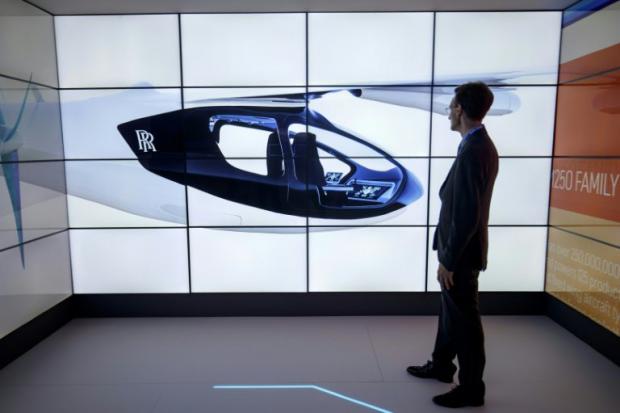
Breaking News
 Quantum Internet Explained: Lasers, Satellites, & Secure Communication | Impact Quantum Podcast
Quantum Internet Explained: Lasers, Satellites, & Secure Communication | Impact Quantum Podcast
 Stanford's secret censorship meeting exposed
Stanford's secret censorship meeting exposed
 Bill Gates Launches $1.4 Billion Soil Bioengineering Initiative...
Bill Gates Launches $1.4 Billion Soil Bioengineering Initiative...
 Did you know that Israel is literally NOT America's ally?
Did you know that Israel is literally NOT America's ally?
Top Tech News
 Goodbye, Cavities? Scientists Just Found a Way to Regrow Tooth Enamel
Goodbye, Cavities? Scientists Just Found a Way to Regrow Tooth Enamel
 Scientists Say They've Figured Out How to Transcribe Your Thoughts From an MRI Scan
Scientists Say They've Figured Out How to Transcribe Your Thoughts From an MRI Scan
 SanDisk stuffed 1 TB of storage into the smallest Type-C thumb drive ever
SanDisk stuffed 1 TB of storage into the smallest Type-C thumb drive ever
 Calling Dr. Grok. Can AI Do Better than Your Primary Physician?
Calling Dr. Grok. Can AI Do Better than Your Primary Physician?
 HUGE 32kWh LiFePO4 DIY Battery w/ 628Ah Cells! 90 Minute Build
HUGE 32kWh LiFePO4 DIY Battery w/ 628Ah Cells! 90 Minute Build
 What Has Bitcoin Become 17 Years After Satoshi Nakamoto Published The Whitepaper?
What Has Bitcoin Become 17 Years After Satoshi Nakamoto Published The Whitepaper?
 Japan just injected artificial blood into a human. No blood type needed. No refrigeration.
Japan just injected artificial blood into a human. No blood type needed. No refrigeration.
 The 6 Best LLM Tools To Run Models Locally
The 6 Best LLM Tools To Run Models Locally
 Testing My First Sodium-Ion Solar Battery
Testing My First Sodium-Ion Solar Battery
 A man once paralyzed from the waist down now stands on his own, not with machines or wires,...
A man once paralyzed from the waist down now stands on his own, not with machines or wires,...
Rolls Royce taxis the world's fastest electric aircraft to-be

These first taxi tests of what is designed to become the world's fastest electric plane are an important early demonstration of its cutting edge propulsion systems, which the developers hope can offer a blueprint for not just planes but air taxis and other futuristic forms of urban mobility.
We first caught wind of the Spirit of Innovation plane back in 2019, when Rolls-Royce announced the concept along with its plans to top the previous speed record for an electric plane – 210 mph (338 km/h) set by Siemens in 2017. It is being built together with a number of partners as part of the Accelerating the Electrification of Flight program funded by the UK government, and will be powered by a battery pack of 6,000 cells, claimed to be the most energy-dense ever integrated into an aircraft.
The 500-hp (400 kW) all-electric powertrain is expected to one day propel the aircraft to speeds in excess of 300 mph (482 km/h) and claim a new record for electric flight in the process. As early tentative steps toward this goal, the Spirit of Innovation has now demonstrated a successful integration of this advanced propulsion system by using it to roll down the runway for the first time.
"For the first time, the plane propelled itself forward using the power from an advanced battery and propulsion system that is ground-breaking in terms of electrical technology," says Rob Watson, Director of Rolls-Royce Electrical. "This system and the capabilities being developed will help position Rolls-Royce as a technology leader offering power systems to the Urban Air Mobility market."



